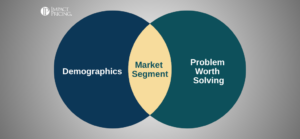You can listen to the full audio version of this blog we call — Blogcast.
A company or product without Product-Market Fit (PMF) is doomed to fail. We probably all agree with that. Products without a market willing to pay for them find themselves on the island of misfit toys. (Do you get that reference?)
From a high-level perspective, the concept of PMF makes sense. You release a new product and find a market that likes it enough to buy it. You have PMF. But you’re not done. Sure, you can make money by selling your product to that market, but you are FAR from optimized.
Buyers in your market are not identical. Some of them value your product a lot more than others. Some people don’t quite value your product enough to pay what you’re asking, but would buy if the product was less expensive. Some buyers in your market use it to solve different problems than other buyers.
Finding initial PMF is only the first step to building a large, profitable product or company. After you’ve proven PMF, it’s time to architect a product portfolio to optimize PMF for different segments. You can build different versions of your product for different market segments. You can create good, better, best packaging within market segments. You can rethink your pricing metrics for each segment to capture more from the buyers that receive the most value.
Think of this as PMF per segment. But the magic only happens when you understand each segment. You need to know your buyers, especially how and why they make purchase decisions. When you nail that, you can invest your product development resources more effectively.
After finding PMF, many companies continue to improve their product, making all new features available to all customers at the same price. Maybe that’s needed to stay ahead of the competition, but this is also a perfect time to start thinking about new versions.
Almost every successful SaaS company releases many versions of their product over time. Let’s use Hubspot as an example. They started in 2007 with a single product, Marketing Hub, that targeted small and medium-sized businesses focused on inbound marketing. As they found success, they built multiple versions of their product called Basic, Professional, and Enterprise. With even more success, they launched CRM Hub, Sales Hub, Service Hub, and CMS Hub. Now, they even have versions that target specific industries like agencies, software companies, and non-profits.
Of course, you’re not going to leap quickly from your original PMF to several product versions, but the better you understand your buyers, the better you can architect your roadmap. You want to discover why people buy your product. What problems are they solving? (Don’t assume you know.)
Then, estimate the value to your customers of solving these different problems. The problems with the most value inform which new versions to prioritize. When you find problems some people value a lot and others don’t even have, you may want to create a new version of your product.
Yes, Product-Market Fit is essential, but it’s not enough. PMF is required to launch new products successfully, but it’s only the first step. Once you’ve found PMF, it is time to think about segments. Who values your solution the most? Why? What can you do to get them to pay you more while still selling to everyone else? I recommend defining a straw man architecture for your future product portfolio. Then, you can prioritize which versions to build next as you learn more about your buyers.
What are your first steps after proving Product-Market Fit?
Share your comments on the LinkedIn post.
Now, go make an impact!
 Tags: pricing
Tags: pricing













